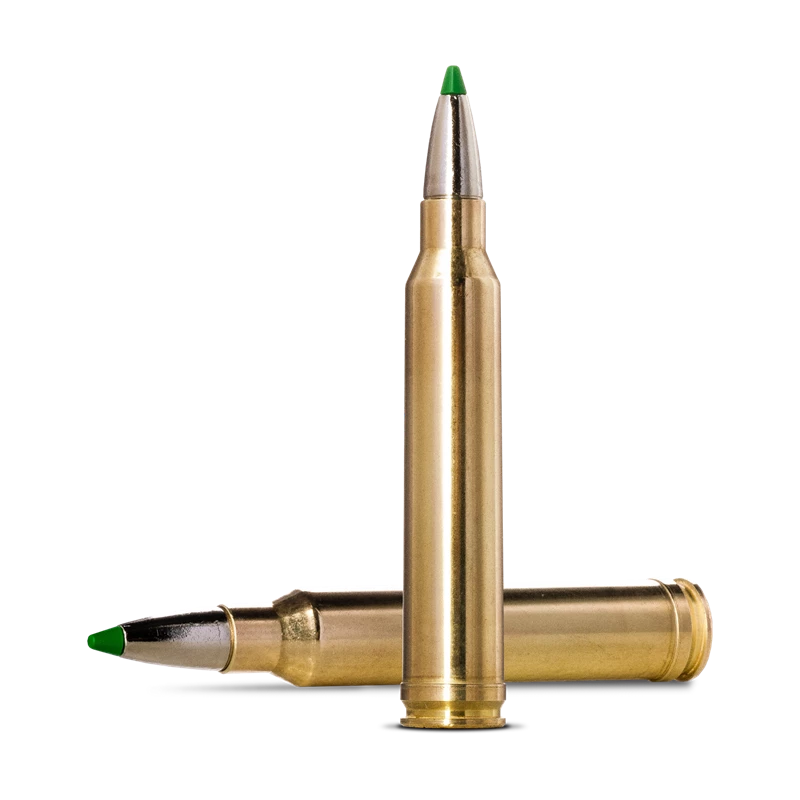
Products (0)
Pages (0)


Norma ECOSTRIKE .300 Winchester Magnum 165gr
-
20177502
Caliber
300 Win. Mag.
Weight
10.7g/165gr
Ballistic coefficient
G1
0.431
mrdImp
214
*This product data is zeroed with a 26 inch barrel
Intended for Hunting
Velocity
V0 3117 f/s
V100 2887 f/s
V200 2669 f/s
V300 2460 f/s
Energy
E0 3559 ft.-lb
E100 3053 ft.-lb
E200 2610 ft.-lb
E300 2217 ft.-lb
Wind
100yds 0.7 in
200yds 2.7 in
300yds 6.4 in
300 Win. Mag.
Introduced as late as 1963 this cartridge was soon to become the most popular in the line of .300 magnums. Unlike the predecessors .458, .264 and .338 Winchester Magnums it has a longer case and a rather short neck (.264”) in order to increase the case capacity. As a rule of thumb the neck of a cartridge should be equal to the caliber or preferably a little longer, but experience has shown that the .300 Win. Mag. has not really suffered in this respect. It can still be used in a standard-length bolt action but this means that the heavier bullets must be seated rather deep and hereby occupy some of the powder space. Like the other .300 magnums it is at its best for hunting larger species like moose or elk at long range. The recoil is heavy, but most shooters will be able to handle it after some practice and handloads with lighter bullets are a good choice for this purpose.
Show all 300 Win. Mag.Zero range, yards
Height of trajectory above line of sight if sighted in a X yards. For sights 40mm above bore
| 50yds | 100yds | 150yds | 200yds | 300yds | |
|---|---|---|---|---|---|
| 50 | 0.6 | 0.2 | -1.3 | -8.1 | |
| 100 | -0.3 | -0.7 | -2.6 | -10 | |
| 150 | -0.1 | 0.5 | -1.6 | -8.6 | |
| 200 | 0.3 | 1.3 | 1.2 | -6.1 |
Components


